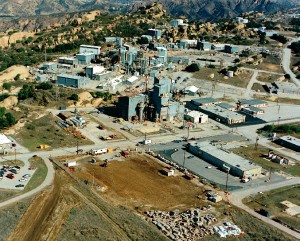EPA TO PERFORM THE RADIATION SURVEYS. EPA is to determine local background for radiation, identify what soil in Area IV and the Northern Buffer Zone is above background and therefore needs to be cleaned up, after cleanup confirm that all the contamination was in fact cleaned up, and confirm that any fill to be used is clean. DTSC will be responsible for determining chemical background and where soil onsite exceeds it.
CLEANUP STANDARD NOT TO BE EXCEEDED—IF YOU FIND IT, YOU CLEAN IT UP. The cleanup is to be done on a “not to exceed basis,†which means that you can’t leave contamination in one place by averaging it with lower levels found somewhere else. If soil exceeds the cleanup standard, it is to be cleaned up.
EXCEPTIONS: There are exceptions to the cleanup-to-background standard for Endangered Species Act considerations, Native American artifacts, detection limits, and limited unforeseen circumstances where a particular spot might be technically impossible to clean up.
AREAS COVERED BY AGREEMENT: The DOE agreement covers all of Area IV (where the nuclear work occurred) and the Northern Buffer Zone. The NASA agreement covers all of Area II and NASA’s portion of Area I. What is not covered by these agreements are the remaining areas controlled by Boeing—Area III, part of Area I, and the Southern Buffer Zone. Those areas are the subject of continuing negotiations with Boeing, which has as yet not agreed to a similar cleanup agreement.
WASTES TO BE DISPOSED OF IN LICENSED DISPOSAL SITES. All low-level radioactive waste (LLRW) is to be disposed of at facilities licensed for disposal of LLRW. All chemically hazardous wastes are to be disposed of at facilities permitted for disposal of those wastes.
MEASURES TO EXPEDITE THE CLEANUP. The agreements include measures to speed up completion of the cleanup, including having EPA take co-located radiation and chemical soil samples, and elimination of paperwork requirements that the cleanup-to-background deal make unnecessary.
2017 CLEANUP DEADLINE. The agreements contain a deadline of 2017 to complete the soil cleanup, and as indicated above, make meeting that deadline much more feasible.
AGREEMENTS ARE TO BE BINDING AND LEGALLY ENFORCEABLE. The agreements are in the form of Agreements on Consent making the commitments legally binding, contain penalties for violation, and include mechanisms for enforcement. DOE waives various potential defenses so that the state can take DOE to court if DOE doesn’t meet all its obligations.
NASA AND DOE AGREEMENTS SIMILAR, WITH A COUPLE OF DIFFERENCES. The NASA agreement largely parallels the DOE one, except that the issue of what to do if radioactive contamination is found on the NASA property is left to future discussions with DTSC.
